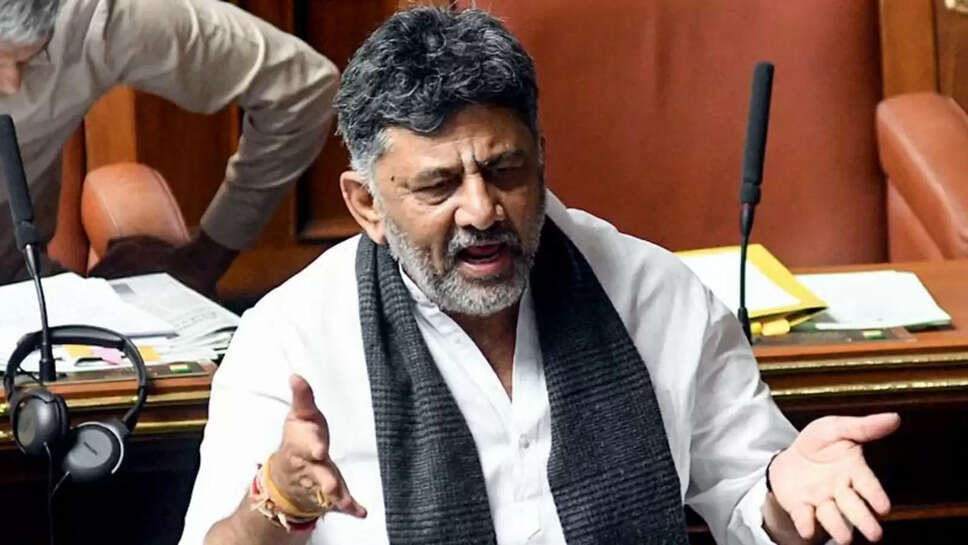Congress Eyes Leadership Overhaul in Karnataka; Shivakumar’s Position Under Review

The buzz across Karnataka's political corridors is thickening as whispers intensify about a major Congress reshuffle in the state leadership. Senior Congress leader D.K. Shivakumar—widely believed to be the front-runner for the next Chief Ministership—might face an unexpected roadblock. Growing ambition from within the party, notably from the Jarkiholi and Khandre factions, appears to complicate Shivakumar’s path, hinting at a power tussle poised to reshape the state’s political dynamics.
1. Shivakumar’s Ascent So Far
Doddalahalli Kempegowda Shivakumar, the party’s treasurer and two-time minister, has long been a stalwart in Karnataka politics. He earned acclaim for his grassroots connect, administrative acumen, and the knack for delivering electoral triumphs. With organizational strength and loyalty within the Congress unit, Shivakumar enjoyed a perception as the natural heir to the state’s top post.
Over the past two terms, his influence grew steadily—seen especially in the Congress government’s ability to manage inner-party unity. That reputation amplified when the 2023 elections delivered a majority led by Congress and, despite the presence of senior leaders like Siddaramaiah and D.K. Suresh, speculation hinted that Shivakumar was primed to be elevated after a defined period.
2. Emerging Contenders: Jarkiholi and Khandre
While Shivakumar’s supporters expected a smooth passage, two other power centers are signaling readiness to vie for dominance:
The Jarkiholi Bloc
-
Kinship & Influence: The Jarkiholi family, led by Satish Jarkiholi and including his brothers Balachandra and Lakhan, wields considerable sway in the Belagavi region. Their longstanding contributions and government roles have cemented local loyalty.
-
Visible Ambition: Satish Jarkiholi and his group have subtly escalated their visibility—through public engagements, appeals from local leaders, and hints of readiness to shoulder greater responsibilities.
-
Community Dynamics: Their base in North Karnataka represents a strategic electoral slice, pushing them to stake a claim in leadership deliberations.
The Khandre Faction
-
Marathwada Roots: The Khandre family, led by B. K. Khandre and his son Avinash, remains influential in the North Karnataka districts. Their legacy involves active political presence and media savvy.
-
Expanding Reach: Avinash Khandre's recent elevation in the state unit and involvement in key policy committees signals an intended push for a larger role.
-
Assertive Stand: Along with community leaders, they have begun expressing the ambition for recognized voices in leadership positions—possibly even the Chief Ministership.
3. The Leadership Puzzle: Where Does Shivakumar Stand?
Shivakumar’s clout remains undeniable; however, his situation is more nuanced:
-
Governmental Record: Having managed two significant ministries, including large infrastructure portfolios, he is credited with delivering on tangible projects. That garners both party trust and administrative credibility.
-
Organizational Depth: A robust network across the state’s political landscape positions him as capable of managing a coalition of diverse interest groups within Congress.
-
Public Persona: His grassroots-driven image hits home with voters, but detractors question his capacity to navigate factional politics at the highest level.
Despite his strengths, the growing assertion from Jarkiholi and Khandre leaders threatens to dilute his singular claim, setting stage for a potentially fractured leadership debate.
4. What’s Driving the Intra-Party Rift?
Several factors contribute to the current strife:
-
Regional Aspirations
-
North Karnataka leaders feel underrepresented in top leadership. They cite historical bias toward the state’s southern belt and claim it’s time for power rebalancing.
-
-
Electoral Calculus
-
With looming Lok Sabha elections and shifting caste-cloud dynamics (Lingayat, Vokkaliga, Dalit, OBC), Congress is keen on inclusive power formulas to secure cross-regional support.
-
-
Performance Pressure
-
Recent administrative glitches and leadership criticism have aggravated internal pressure for high-impact governance. Different factions are presenting alternatives.
-
-
Nomination Timing
-
Delays or ambiguity in selecting the next CM post-elections are feeding factional anxieties, magnifying potential for leadership recasting.
-
5. Clues Suggesting Shivakumar’s Possible Easing Out
-
Signal From High Command: Central leadership appears to be evaluating alternative leadership models—a tactic often used to balance multiple constituencies.
-
Subtle Communication: Conversations have turned from Shivakumar’s inevitability to merit, ability to unite, and representation—all criteria that open dialogue around other candidates.
-
Discreet Negotiations: There are murmurings of portfolio adjustments as compensation—positioning others in high-profile roles while soft-pedaling Shivakumar’s ascendancy.
-
Alignments: Some ministers and MLAs from North Karnataka and Marathwada are tightening their ranks; their alignment with Jarkiholi or Khandre camps speaks volumes.
6. Possible Outcomes of the Rejig
The coming weeks could see several scenarios crystalize:
A. Shivakumar Retains Lead Post
-
If he consolidates his base, counters overtures by rival factions, and articulates a unified vision, he could ease into the CM role.
-
Continued backing from influential ministers and a smooth central nod could finalize his tenure.
B. A Power-Sharing Approach
-
Congress might unveil a coalition formula: Shivakumar in Karnataka CM seat complemented by a senior ministerial post for either Jarkiholi or Khandre.
-
Rotating the CM berth at a future trigger point to reflect regional power-sharing could be dangled.
C. Emergence of a Compromise Candidate
-
Congress high-command could tap a third leader—someone like Siddaramaiah (if not CM already) or another leader acceptable to both factions.
-
A neutral but capable face may quell infighting and preserve state-level electoral cohesion.
D. A Reshuffled Team with Portfolios Realigned
-
Even if Shivakumar ascends, he may need to nurture rivals by allocating them key portfolios—Milk, Public Works, Rural Development—territorial symbols of authority.
7. Implications for Karnataka and Beyond
The outcome of this reshuffle holds multifaceted implications:
-
Governance Impact: Smooth transition maintains policy momentum in welfare, budget execution and social equity; fractured transition could stall administration.
-
Electoral Signals: A transparent, inclusive decision projects competence, helpful ahead of the national elections. Conversely, unresolved jockeying might invite opposition criticism.
-
Congress Unity: Mismanagement could splinter state unit; robust consensus building could model coalition leadership for Congress elsewhere.
-
Legacy Building: For Shivakumar, a smooth path cements his legacy; for Jarkiholi and Khandre, visible roles could set them up for future expansion.
8. What Comes Next: Crucial Weeks Ahead
-
High Command Deliberations: Travel by state leaders to Delhi, closed-door meetings with Sonia Gandhi, Rahul Gandhi et al., signals that key decisions are in progress.
-
MLA Convocation Dynamics: MLAs may rally quietly or overtly behind camps, seeking clarity on leadership direction.
-
Public Interface Tactics: Active public interactions by all factions—town halls, community events—could be positioning tools.
-
Media Messaging: Speeches focusing on regional balance, governance priorities and internal unity hints at each camp's readiness.
9. Analyst Take: Stakes & Strategies
-
Shivakumar’s Bet: His stakes lie in maintaining internal discipline and demonstrating administrative readiness amid rising internal challenge.
-
Jarkiholi’s Drive: He seeks a voice and role proportionate to his delegate network; timing his claim is critical.
-
Khandre’s Pivot: With focus on eastern belt and youth appeal, Khandre’s emerging influence may press for a significant leadership role or unveiling via cabinet portfolios.
-
High Command’s Play: Balancing regional equity, factional harmony, and electoral optics, the central leadership may opt for a formula that mitigates division and projects governance strength.
10. A State at the Crossroads
Karnataka is poised at a defining moment. The state has delivered power to Congress, but now the task is to shape leadership that can deliver governance and morale. Shivakumar, Jarkiholi, and Khandre each bring strengths—but also herald intra-party tensions that need management.
How the party manages these dynamics will send strong signals about its capacity to govern, manage diversity, and deliver electoral credibility. Whether Shivakumar consolidates or steps aside for a more regionally calibrated power structure, leadership decisions in the next few days will reverberate through Karnataka’s future—and perhaps influence the broader trajectory of Congress as it seeks resurgence in national politics.
At stake: the unity and capability of Karnataka’s Congress, and the message it sends about internal democracy and cohesion—high stakes in a state that matters, again, as India moves closer to national polls.
